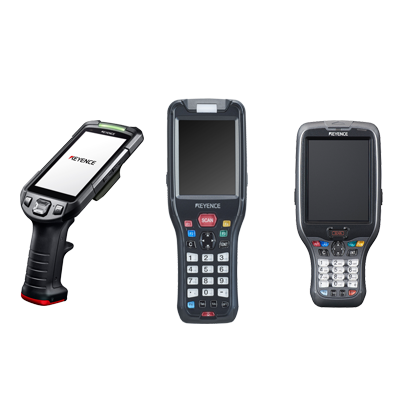TOMAS TECH for "Cost reduction" and "Business efficiency" through digitalization
Handy terminal system
Feature
We provide solutions that utilize the handy terminal.
A solution to the logistics industry where new data is constantly generated in each process such as inventory management, receipt / shipment inspection, delivery, and collection.
We are also developing solutions for the manufacturing industry, such as production control, traceability, labor saving and efficiency improvement.
It is possible to systematize the information currently used by the customer, such as barcodes, QR codes, Data Matrix, and character strings.
It will be Noh. Convenience can be further enhanced by linking with a core system such as ERP.
Purpose
We will explain what kind of business the handy terminal is introduced by looking at four typical applications such as “inventory management system”, “picking”, “traceability system (inter-process management)”, and “POKAYOKE system”. Depending on the application, you can correctly understand the benefits of introducing a handy terminal.
◆ Inventory management system
◆ Picking system
◆ Traceability system (inter-process management)
◆ POKAYOKE system

◆ Inventory management
Inventory management is to keep the quantity of goods optimal according to the situation.
If there are many items to be managed in inventory, an inventory management system that uses a handy terminal, etc. by assigning a barcode or 2D code is effective.
First, read the barcode of the item or location (shelf, row, column), enter information such as quantity, and register.
If location management is not possible, issue a barcode and paste it on a shelf.
Once you have registered all the items and locations, you can manage the actual items accurately by simply scanning the barcode when entering or leaving the store or moving.
Data such as warehousing / delivery / inventory can be checked in real time, so appropriate management is possible.
◆ Picking system
“Picking,” the work of collecting and shipping products stored in warehouses and distribution centers, is a term mainly used in distribution operations. In recent years, the burden of picking has increased as the demand for online shopping has increased. The process of collecting products in the storage location at the shipping location is called “picking”. It is a word that is used daily in the logistics industry, and we check the product number and quantity based on the contents described in the shipping instruction (picking list) and collect the specified products. There are two main types of picking methods: “picking method” and “sowing method”.
◆ Traceability system (inter-process management)
Traceability is a combination of “Trace” and “Ability”.
In traceability, the identification code that conveys information is called the “expression style”, the one that records such as labels and electronic tags is called the “transmission medium”, and the paper ledger and personal computer that collects and manages it is called the “recording medium”. The easiest traceability method is to convey the characters (expression style) by handwriting slip (transmission medium) and copy it to the ledger (recording medium), but it is troublesome and inefficient to record a lot of information. Therefore, to ensure traceability, barcodes, 2D codes, and handy terminals that read them are generally used.
◆ POKAYOKE system
“Pokayoke” is a mechanism to detect or prevent the occurrence of defects due to “Pokamis” that cannot be avoided at the manufacturing site.
There are various factors of Pokamis lurking in the manufacturing site. For example, there is no end to the list of mistakes in reading part numbers, mistakes in parts, mistakes in setting molds and jigs, and mistakes in mixing raw materials. It is possible to prevent such pokamis by thoroughly collating with a handy terminal.
